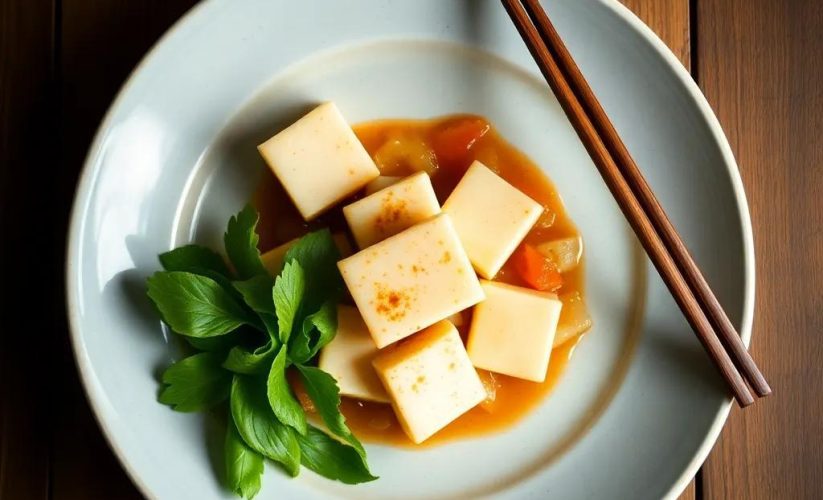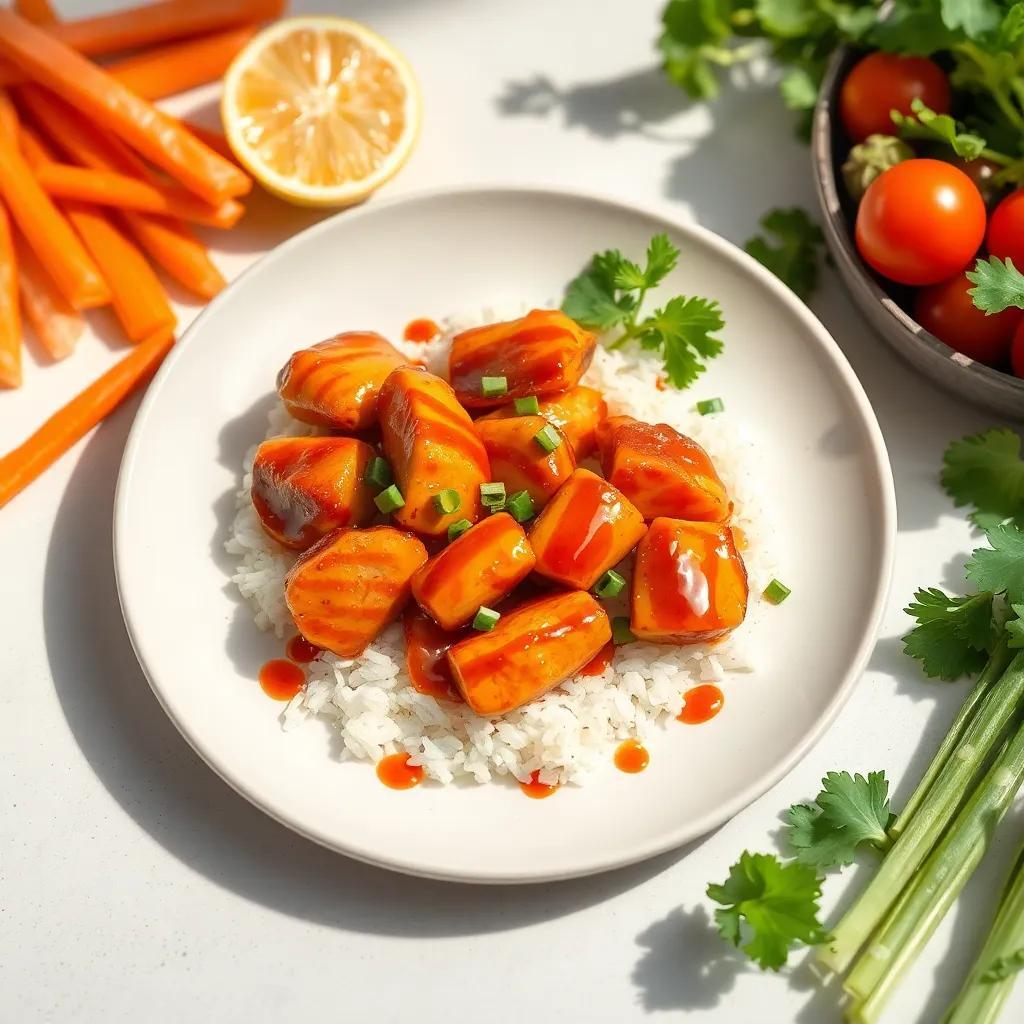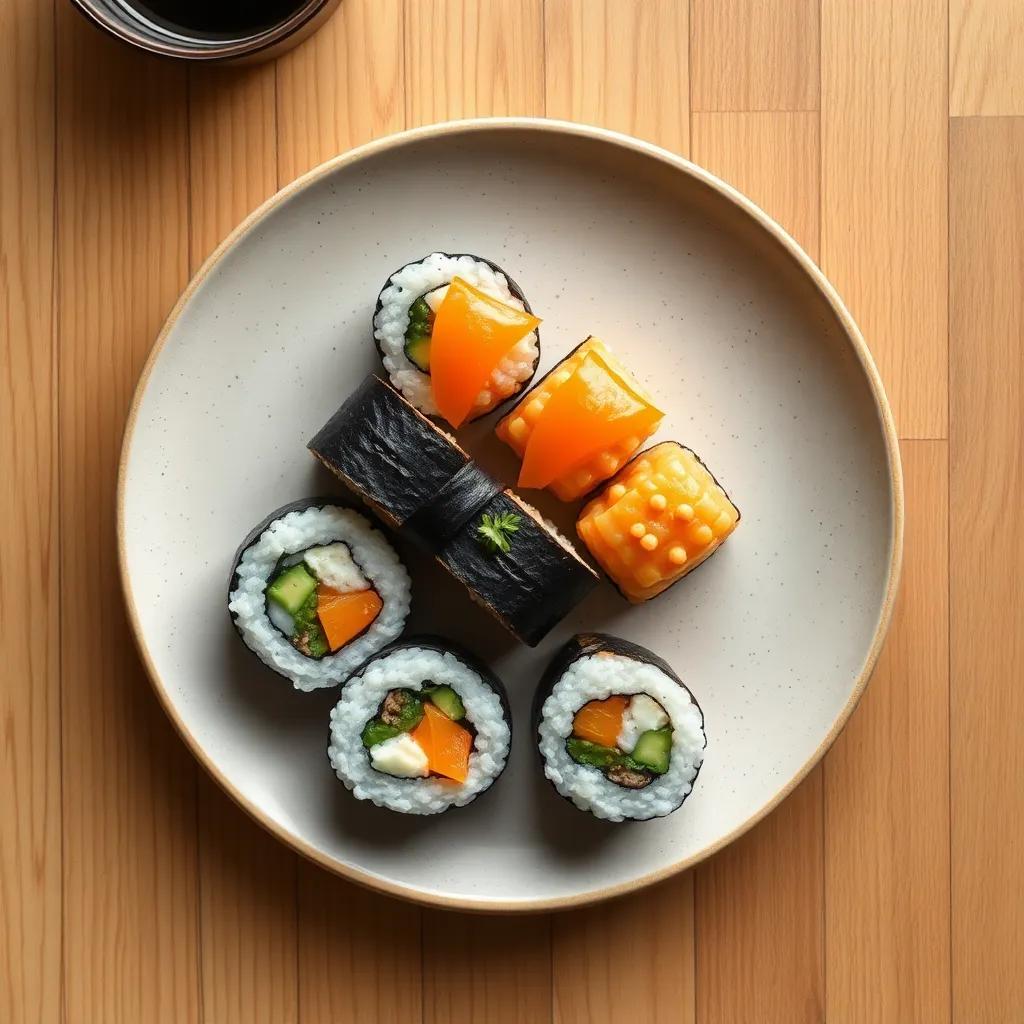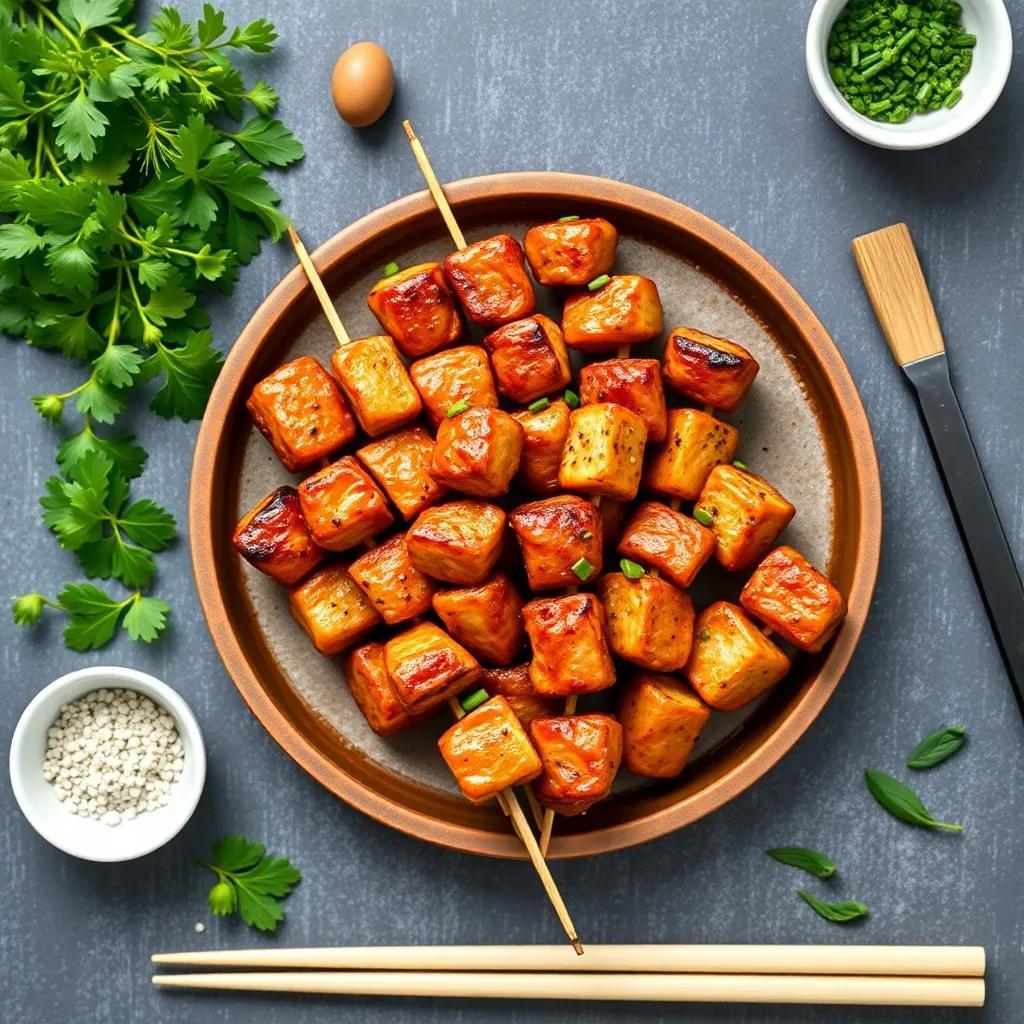Master the Art of Perfect Gyoza: Easy, Crispy Dumplings Recipe

Master the Art of Perfect Gyoza: Easy, Crispy Dumplings Recipe
🌍 Cuisine: Japanese
⚙️ Difficulty: Medium
Ingredients
Nutrition Facts
160
Instructions
- Prepare the filling: In a large bowl, combine ground pork, finely chopped Napa cabbage, minced garlic, grated ginger, chopped green onions, soy sauce, sesame oil, salt, and pepper. Mix everything thoroughly until well combined.
- Set a small bowl of water nearby to help seal the gyoza wrappers.
- Take one gyoza wrapper and place about 1 teaspoon of filling in the center.
- Dip your finger into the water and moisten the edge of the wrapper.
- Fold the wrapper in half to form a half-moon shape and press the edges together firmly to seal. You can pleat the edges if desired for a traditional look.
- Repeat the process until all filling is used, placing finished gyoza on a plate to avoid sticking.
- Heat 1 tablespoon vegetable oil in a non-stick skillet over medium-high heat.
- Place 8-10 gyoza in the skillet, flat side down. Fry for 2-3 minutes or until the bottoms turn golden brown and crispy.
- Carefully pour 1/4 cup water into the pan and immediately cover with a lid. Steam the gyoza for about 5-6 minutes or until the water evaporates and the filling is cooked through.
- Remove the lid and cook for an additional 1-2 minutes to crisp up the bottoms again if needed.
- Transfer gyoza to a serving plate. Repeat with remaining dumplings.
- Serve hot with dipping sauce made from soy sauce, rice vinegar, and optional chili oil for an extra kick.
- Enjoy your crispy, juicy gyoza immediately for best taste and texture!
Serving Suggestions
- Serve with a simple dipping sauce made from soy sauce and rice vinegar.
- Pair gyoza with a bowl of miso soup for a complete Japanese-style meal.
- Garnish with finely sliced green onions and a sprinkle of toasted sesame seeds.
- Serve alongside steamed rice and pickled vegetables for added balance.
- Add chili oil or freshly grated ginger to the dipping sauce for extra depth.
- Include a side of sautéed bok choy or other Asian greens.
- Use gyoza as an appetizer or part of a multi-course Japanese dinner.
Table of Contents
- Intro
- Ingredient Notes
- Tips & Variations
- Leftovers & Storage
- Behind the Recipe
- FAQ
- Your Turn in the Kitchen
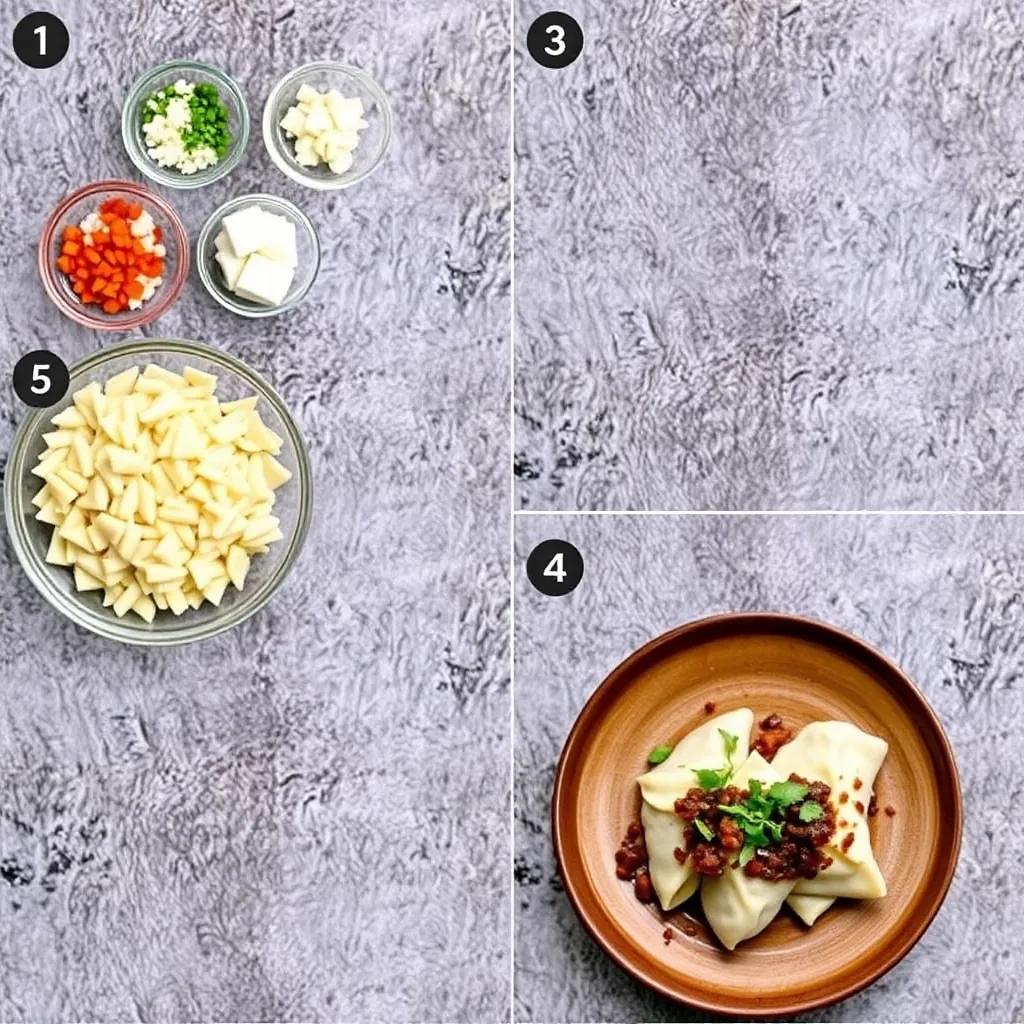
Intro
Stepping into the world of homemade gyoza is like opening a door to delicious simplicity paired with satisfying technique. These little Japanese dumplings hold a special charm—they’re crispy where it counts, tender and juicy inside, and surprisingly approachable for cooks willing to try their hand at folding and pan-frying. What makes this recipe truly exciting is how it transforms everyday ingredients into bite-sized wonders that carry layers of flavor and texture with every mouthful.
Whether you’re planning a cozy night in, an impressive appetizer for guests, or a fun cooking project with family or friends, mastering gyoza adds an irresistible skill to your culinary repertoire. The process itself invites careful attention and a bit of creativity, making it a rewarding experience that culminates in golden, perfectly seared dumplings. They’re ideal for sharing—ideal for pairing with a variety of dipping sauces, soups, or even a chilled beverage on a warm day.
There’s something almost meditative about the rhythm of filling, folding, and frying—each step a chance to slow down and enjoy the craft of cooking. Once you’ve perfected the balance between crispiness and tender filling, these gyoza might just become your go-to crowd-pleaser, whether for casual weeknight dinners or festive gatherings. Dive in and discover how mastering this iconic dish can elevate simple ingredients to a memorable culinary moment.
Ingredient Notes
When it comes to creating perfect gyoza, a few key ingredients deserve special attention, as they play pivotal roles in flavor, texture, and authenticity. Understanding these components will help you make informed choices and even customize the recipe to your liking.
Ground Pork:
The backbone of the filling, ground pork brings juicy richness and a tender bite. Opt for ground pork with a balanced fat content—around 20–25% fat is ideal—to ensure your gyoza stay succulent without being greasy. Leaner meat tends to dry out the filling, while overly fatty pork can leak excess oil during cooking. If pork isn’t your preference, ground chicken or turkey can be good alternatives, though they might need extra moisture like a splash of soy sauce or a tiny bit of oil to keep the filling juicy.
Napa Cabbage:
A gentle crunch and subtle sweetness come from finely chopped Napa cabbage. This mild, tender cabbage is less bitter than traditional green cabbage, making it perfect for dumplings. Before mixing, it’s helpful to salt the cabbage lightly and let it drain in a sieve or paper towel to remove excess water — preventing sogginess in the filling and helping achieve that coveted crispness in the cooked gyoza. If you can’t find Napa cabbage, savoy cabbage or even bok choy make suitable substitutes, though their textures and flavors are slightly different.
Gyoza Wrappers:
The holders of all that deliciousness, gyoza wrappers can be round or square, and usually come pre-made either fresh or frozen. There’s a delicate art to picking the right wrapper: fresh ones are softer and more pliable, making folding easier, while frozen wrappers tend to be sturdier but require careful thawing to prevent tearing. Most Asian grocery stores carry them, but you can also find them online. Alternatively, if you’re feeling adventurous, homemade wrappers made from simple dough (flour and water) add a satisfying touch—though the texture might vary and folding takes extra practice.
Sesame Oil:
Though used sparingly, sesame oil imparts a warm, nutty aroma that’s signature to many Japanese and broader East Asian dishes. Its inclusion in the filling elevates the flavor profile, making the gyoza more fragrant and nuanced without overpowering the pork and veggies. If you don’t have sesame oil on hand, a mild toasted oil or even a tiny bit of olive oil can be used, but keep in mind that missing sesame oil means missing that subtle, toasty depth.
By focusing on these ingredients and their qualities, you’ll not only enhance the flavor and texture of your gyoza but also gain confidence in adapting the recipe to your pantry and palate. Choosing quality components, prepping them thoughtfully, and handling them with care are the keystones of mastering these crispy, juicy dumplings.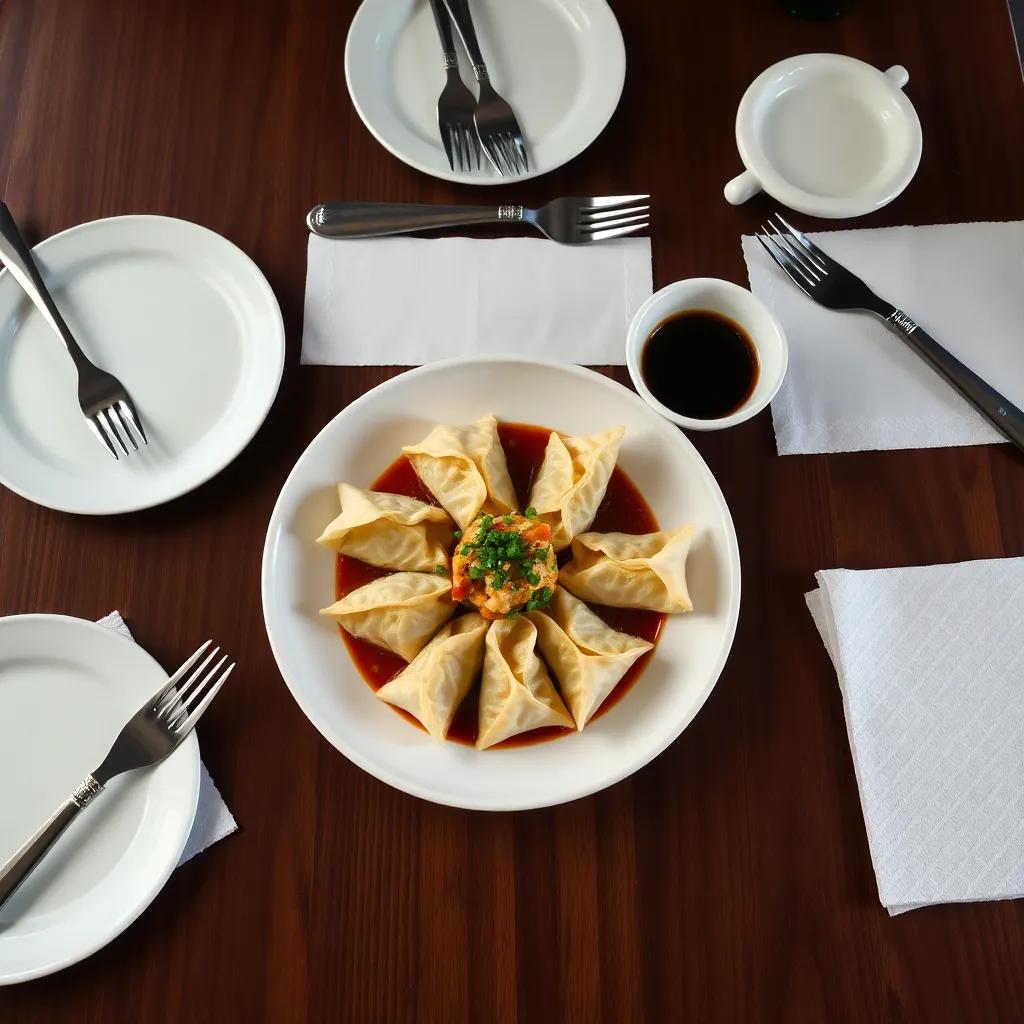
Tips & Variations
Elevate your gyoza game with these insider tips and creative twists to make every batch uniquely yours. First, when folding, don’t rush—taking a moment to pleat the edges not only seals in the juicy filling but also creates the signature look that’s both elegant and practical for cooking. If you’re new to folding, practicing with plain wrappers before adding filling can build confidence and reduce frustration. Remember, imperfect gyoza still taste fantastic!
For achieving that enviable crispiness, using a non-stick skillet and medium-high heat are your best friends. Adding the right amount of water for steaming is crucial—too little and the filling won’t cook through, too much and your crispy bottoms can get soggy. If you want an extra-crispy crust, try finishing the gyoza with a quick drizzle of toasted sesame oil just before removing them from the pan.
Customization invites endless fun. Swap ground pork for ground chicken, turkey, or even finely chopped shiitake mushrooms and firm tofu for a vegetarian option—just add a splash of soy sauce or mushroom broth to keep the filling moist. For vegans, consider mixing finely grated carrot, chopped shiitake or oyster mushrooms, shredded cabbage, and scallions, seasoned with miso paste or tamari instead of soy sauce to deepen umami.
If gluten is a concern, seek out gluten-free gyoza wrappers made from rice or tapioca flour available in many specialty stores or online. Alternatively, try making your own gluten-free dough using a blend of rice flour and xanthan gum, though it requires a bit of practice to get the right pliability.
Other creative variations include adding finely chopped shrimp or crab to the filling for a seafood twist, or incorporating spices such as five-spice powder or a pinch of white pepper to add subtle warmth. For a fresh herbal note, toss in minced cilantro or shiso leaves. When it comes to dipping sauces, go beyond the classic soy and vinegar mix—try a blend of ponzu sauce, grated ginger, and a splash of chili oil, or a creamy sesame and miso dip for a luscious contrast to crispy dumplings.
Finally, don’t be afraid to experiment with cooking techniques. Gyoza can also be boiled or deep-fried depending on your texture preference. Boiled gyoza (sui-gyoza) have a tender, slippery skin paired with a juicy filling, while deep-fried versions offer a golden crunch all over—both delicious alternatives for different occasions.
By embracing these tips and variations, you transform a simple gyoza recipe into a versatile canvas that’s adaptable to your taste buds, dietary needs, and culinary curiosity. Happy folding and frying!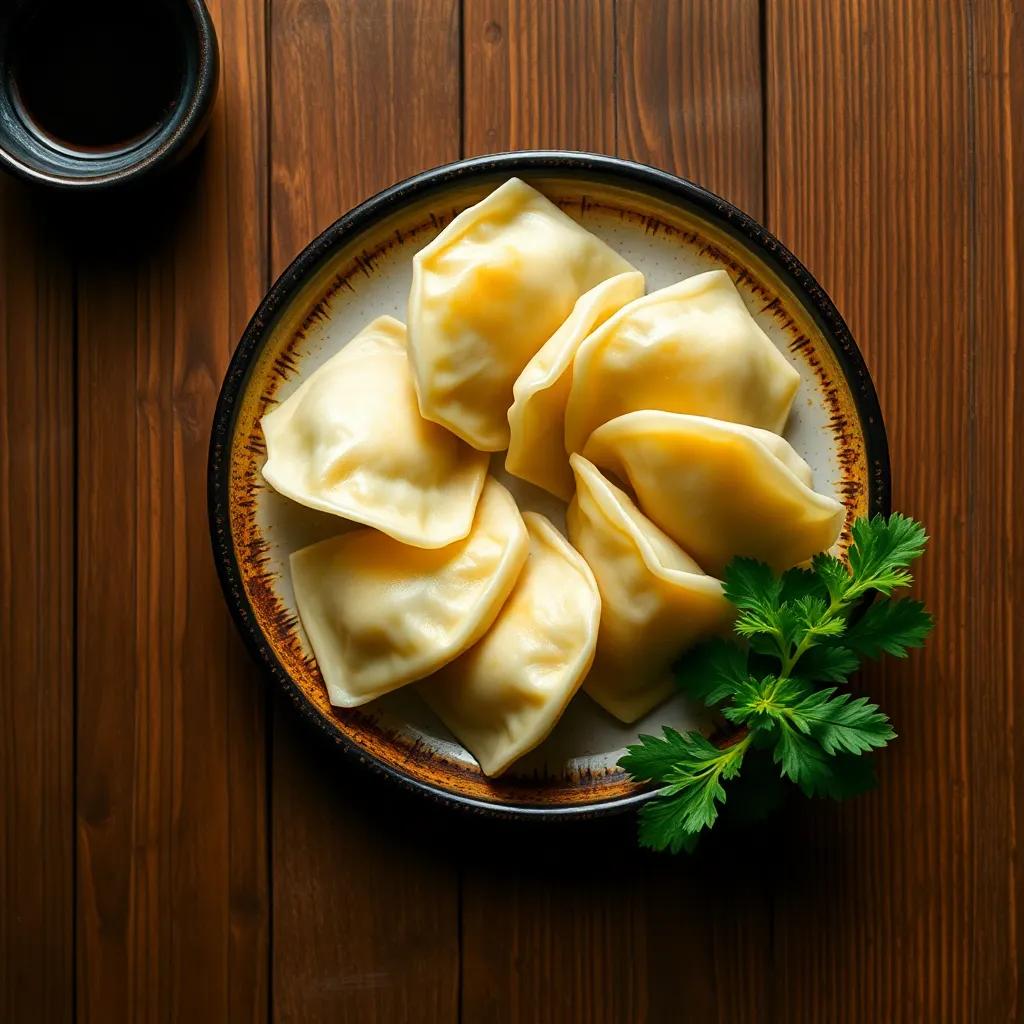
Leftovers & Storage
When it comes to preserving the magic of your perfectly crispy gyoza, proper handling of leftovers can make all the difference between a soggy disappointment and a delicious reprise. Fortunately, gyoza store quite well with a little care, allowing you to enjoy these tasty morsels beyond the initial meal.
Refrigerating Leftovers:
Once your gyoza have cooled to room temperature, transfer them gently into an airtight container to maintain their moisture balance without trapping steam that can cause sogginess. Place parchment paper or a paper towel between layers to absorb excess moisture and prevent sticking. Stored this way, cooked gyoza will stay fresh in the fridge for up to 2 days. When ready to eat, reheat gently in a non-stick pan with a splash of water and a lid to revive that crispy bottom while warming the filling evenly.
Freezing for Future Enjoyment:
If you’ve made a larger batch or want to meal prep, freezing is your best ally. For optimal texture, freeze uncooked gyoza rather than cooked ones. Arrange the freshly folded dumplings on a parchment-lined baking sheet, making sure they don’t touch, and freeze them until solid (about 1–2 hours). Then transfer the frozen gyoza into a freezer-safe zip-top bag or airtight container, with parchment or wax paper to prevent sticking. Frozen uncooked gyoza can be stored for up to 3 months.
When you’re ready to cook, there’s no need to thaw: simply add a few extra minutes to the steaming step in the pan-frying process and watch as they crisp to golden perfection. This technique preserves both the juicy interior and the delicate, crisp exterior — a win-win for busy weeknights or last-minute appetizers.
Reheating Cooked Gyoza:
For leftover cooked dumplings, avoid microwaving if possible, as it tends to make the wrapper chewy or rubbery. Instead, pan-fry them over medium heat with a teaspoon of oil and a splash of water, covering the pan briefly to steam and heat through without sacrificing crispiness. Alternatively, reheating in an air fryer at 350°F (175°C) for 3–5 minutes also does an excellent job at restoring their crunch.
Packing for Lunch or Picnics:
Gyoza make for a fantastic portable snack or lunch when packed thoughtfully. Cool completely before packing in a container lined with parchment paper, and include a small, leak-proof dipping sauce jar for maximum flavor on the go. Keeping them separate from wet ingredients and reheating shortly before eating will ensure they remain appetizing and texturally pleasing.
By understanding these storage and reheating techniques, you not only reduce waste but also keep the essence of your crispy, juicy dumplings alive for days to come. Whether enjoyed right away, saved for a cozy lunch, or pulled from the freezer for a quick dinner, your gyoza will continue to impress bite after bite.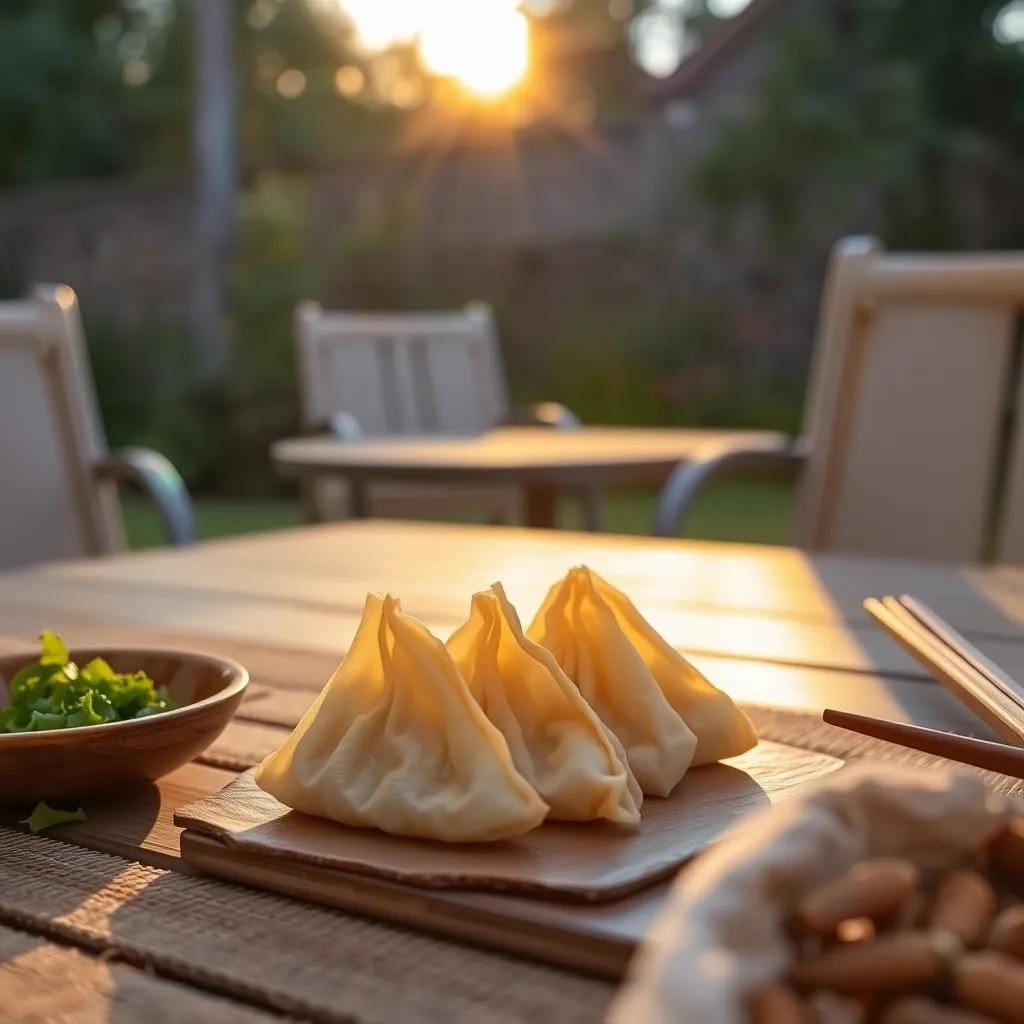
Behind the Recipe
Gyoza, the beloved Japanese dumpling, carries with it a rich cultural heritage that stretches far beyond the crispy, golden crust familiar to many. Its story begins as a close cousin to the Chinese jiaozi, brought to Japan during the early 20th century and adapted over time to suit local tastes and ingredients. The name “gyoza” itself hints at its origins—it’s derived from the Chinese characters for “dumpling” but evolved through a unique Japanese lens that favors a thinner wrapper and a distinctive pan-frying technique called yaki-gyoza, creating that iconic crispy bottom with a tender steamed top.
For many home cooks and chefs alike, crafting gyoza is not just about making food but embracing a time-honored tradition of sharing and communal enjoyment. In Japan, gyoza often appears in casual settings—festivals, izakayas (pubs), or family dinners—encouraging conversation and connection around the table as everyone becomes involved in the folding and eating process. This recipe honors that spirit by stripping away complexity without sacrificing authenticity, inviting cooks at every level to partake in the ritual of transforming simple ingredients into something both comforting and celebratory.
On a personal note, this recipe emerged from countless attempts to strike the perfect balance between juicy filling and crisp exterior in a home kitchen setting. Many novice gyoza makers wrestle with soggy bottoms or dry insides, but mastering the water-to-oil ratio in the pan and understanding how to prep the cabbage transformed this humble dish into a dependable crowd-pleaser for friends and family gatherings. Each batch became a small ceremony—a moment to slow down, focus on technique, and savor the rewards of patience and practice.
Ultimately, this gyoza recipe is more than just a set of instructions—it’s a bridge connecting culinary cultures, a canvas for creativity, and a reminder that homemade food has the power to bring people closer through joyful crafting and shared flavors. Whether it’s your first fold or your fiftieth, each dumpling holds a story—and a delicious one at that.
FAQ
Can I use vegetables or tofu instead of meat in the gyoza filling?
What’s the best way to store leftover gyoza?
Can I freeze gyoza for later use, and how should I reheat them?
What can I substitute if I don’t have gyoza wrappers on hand?
How can I make my gyoza crispier without burning them?
Can I prepare the filling or assemble gyoza ahead of time?
Are there easy ways to customize the dipping sauce?
Your Turn in the Kitchen
Now that you’ve unlocked the secrets to crafting irresistibly crispy, melt-in-your-mouth gyoza, the kitchen is your oyster (or dumpling wrapper)! This recipe brings together simplicity and tradition, inviting you to enjoy the satisfying crunch and savory goodness right at home. Whether you stick to the classic filling or experiment with your own tasty twists, each bite is a little celebration of flavor and skill.
We’d love to hear how your gyoza adventure turns out—did you nail that perfect golden crisp? Have a secret ingredient that makes your batch shine? Drop a comment, rate the recipe, or share your creative spins with us. Happy dumpling-making, and here’s to many delicious moments ahead!

